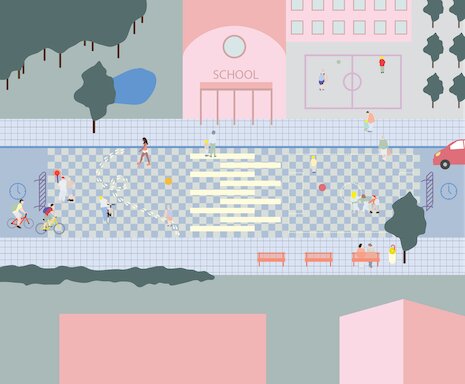Moving is more than going from A to B. Sometimes moving is indeed taking the shortest route, getting to your appointment on time, or joining the red light. But moving around the neighborhood is above all, strolling through the street, gaining new impressions, waving to acquaintances while cycling or jogging in the neighborhood park. Moving through the neighborhood is also healthy. After all, sitting still is the new smoking. A move-friendly neighborhood is not only healthier, but also more beautiful, more livable and also more economically progressive.
This study performs exercise scans in 5 districts of the city of Antwerp, in close consultation with the district authorities. The results of the assignment should encourage adults and children to exercise more in the public space. This study includes thorough analyses of the current situation per district and joint workshops with city staff and external experts. The results of the workshops are processed into advice for each of the 5 districts, in the form of spatial exercise advice with opportunities and opportunities, an urban design proposal for the concrete exercise opportunities per district area and strategic insights into spatial exercise policy.
Researcher(s): Maarten Van Acker, Stijn Rybels, Dirk Lauwers
Commissioned by: Stad Antwerpen
Period: 2019 - 2020
Partner(s): Ndvr, 51N4E

During workshops with city administration we test the fit city scans

The ‘kids route’ gives space to the littlest ones, focuses on safety and perception during transport and logically focuses on slow traffic

Public and semi-public buildings and their associated space are opened up to local residents in support of neighborhood life and movement

An innovative cartography maps out the different types of fit city routes and hot spots, here for the district of Wilrijk

Through interviews and observations on site, a rich set of testimonials was collected that indicated which spatial qualities and barriers influence the mobility in the neighborhood